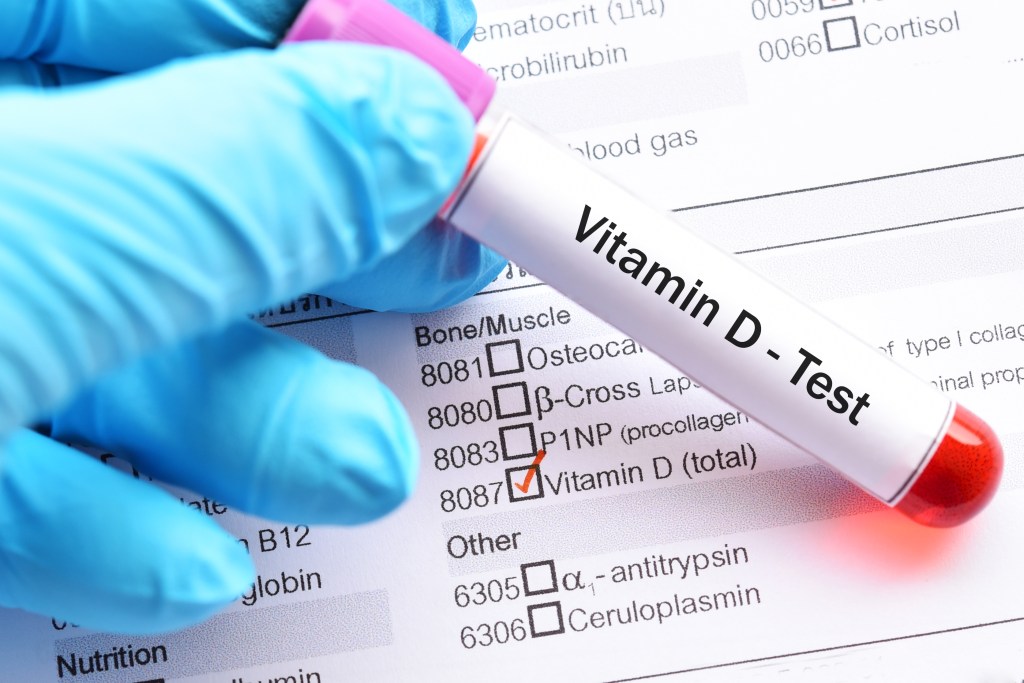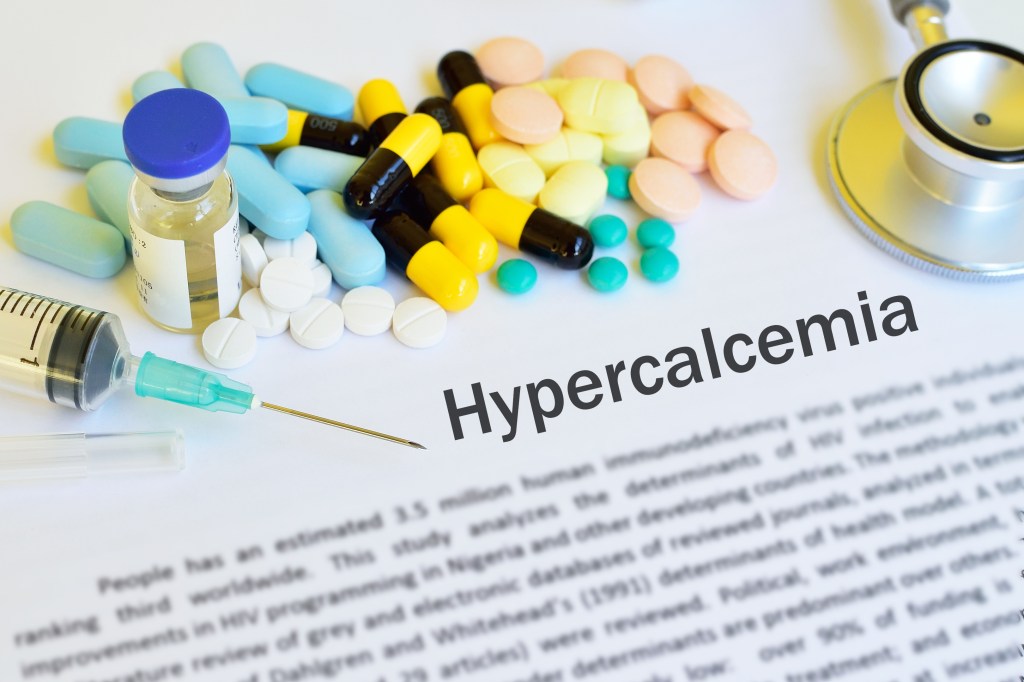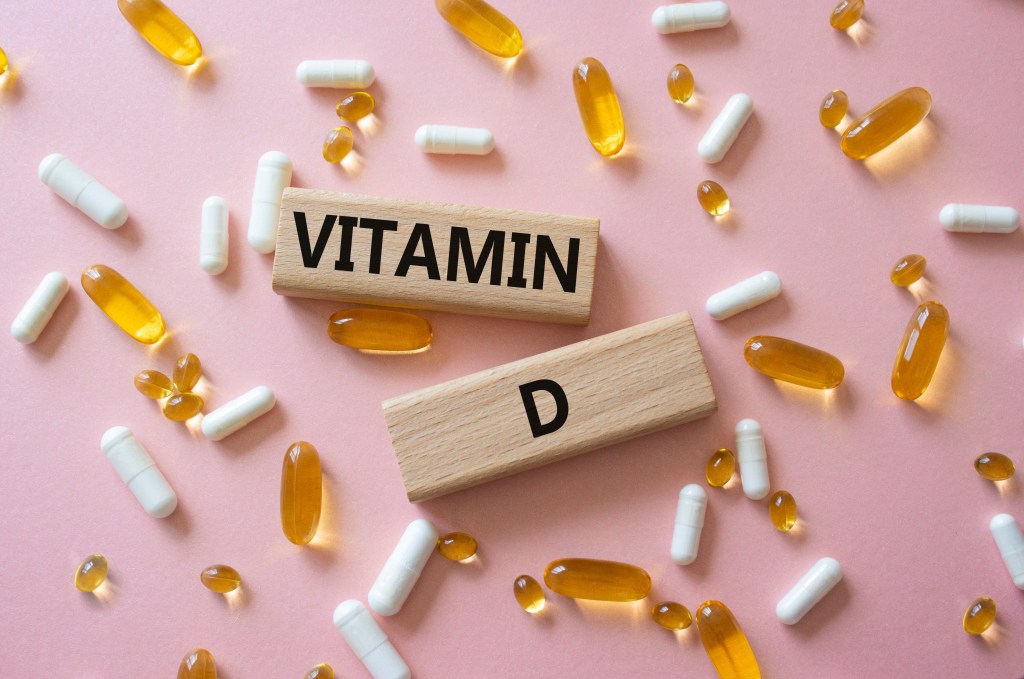Vitamin D intake recommendations vary widely, with some healthcare providers suggesting that 600 IU of vitamin D per day is adequate, while others advocate for 5000 IU or more.
So, what does this mean for individuals trying to determine their optimal vitamin D intake, and is high-dose vitamin D supplementation safe?
Discover who may benefit from taking high doses of vitamin D and learn why vitamin D testing is crucial to identify safe and effective vitamin D intake levels.
What is high-dose vitamin D?
High-dose vitamin D supplementation refers to intake levels significantly exceeding the National Institutes of Health (NIH) recommendations of 600 to 800 IU per day.
Higher doses of vitamin D supplements, generally defined as exceeding 4000 IU daily, are typically used to address vitamin D deficiencies or specific health conditions.
Taking larger doses of vitamin D may be especially important for individuals with limited sun exposure, older adults, or those with certain medical issues such as osteoporosis or autoimmune disorders.
However, vitamin D is a fat-soluble vitamin, meaning it can accumulate in fat cells, increasing the risk of toxicity if vitamin D is taken in excess.
Vitamin D’s potential for accumulation and toxicity has contributed to the conflicting recommendations about appropriate vitamin D dosages.
This highlights the importance of considering individual factors such as vitamin D status and overall health when evaluating effective and safe vitamin D intake levels.
Watch the video below to discover why skin tone can significantly impact vitamin D levels.
What is vitamin D deficiency?
Vitamin D deficiency is characterized by insufficient vitamin D levels, which increases the risk of health issues, including weakened bones, osteoporosis, and compromised immune functions.
According to the NIH, vitamin D deficiency occurs when serum levels of 25-hydroxyvitamin D, the active form of vitamin D, fall below 12 ng/ml (30 nmol/L).1
Vitamin D concentrations between 12 and 20 ng/ml (30 to 50 nmol/L) are considered inadequate and linked to suboptimal bone health and increased osteoporosis risk.
Vitamin D insufficiency is typically caused by a combination of factors, including age, limited sun exposure, obesity, and certain medical conditions that can impair vitamin D absorption.
Additionally, people with darker skin tones may require more sunlight to produce sufficient vitamin D, significantly increasing their risk of deficiency.
“Although certain foods naturally contain vitamin D, such as fatty fish and beef liver, these dietary sources don’t offer enough vitamin D to maintain adequate levels,” explains Dr. Berg. “Relying on dietary intake alone can leave you at increased risk of low vitamin D levels and deficiency.”

What is vitamin D toxicity?
Vitamin D toxicity is characterized by adverse effects due to too much vitamin D in the body, often resulting from high doses of supplements rather than dietary intake or sun exposure.
Toxicity is diagnosed when vitamin D blood levels exceed 125 nmol/L (50 ng/mL), with levels above 150 nmol/L (60 ng/mL) being associated with serious concerns about potential health risks.
Vitamin D and calcium metabolism are closely connected, and vitamin D toxicity can lead to excessive calcium levels as vitamin D facilitates and regulates intestinal calcium absorption.
This explains why the majority of vitamin D toxicity symptoms are linked to elevated blood calcium levels, such as nausea, vomiting, excessive thirst, frequent urination, muscle weakness, and confusion.
Vitamin D toxicity is typically managed by discontinuing vitamin D and calcium supplementation. However, more severe cases may require intravenous fluids and medications to lower calcium levels and prevent complications such as liver disease or kidney failure.

What science says about the risks of high-dose vitamin D
No other dietary supplement generates as much conflicting information and varying recommendations as vitamin D, leaving many individuals uncertain about the appropriate dosage and its impact on health.
General vitamin D intake recommendations of 600 to 800 IU per day are based on maintaining optimal vitamin D levels in healthy individuals.
However, these guidelines don’t account for factors such as age, skin pigmentation, geographic location, and health conditions, all of which can significantly influence individual vitamin D needs.
In addition, those with vitamin D deficiency may require significantly larger doses to raise vitamin D levels into a normal range.
This has been confirmed by research published in StatPearls stating that individuals with vitamin D deficiency benefit from an initial dosage of 10,000 IU per day until levels normalize, followed by a maintenance dose of 3000 to 6000 IU daily to sustain adequate vitamin D levels.2

Is high-dose vitamin D safe?
Not only are substantial doses of vitamin D crucial for addressing a deficiency, but research also shows that long-term intake of high-dose vitamin D isn’t linked to an increased risk of adverse effects.
However, it’s important to consult with your primary care physician before introducing high doses of vitamin D into your routine.
Research published in The Journal of Steroid Biochemistry and Molecular Biology investigated the effects of high-dose vitamin D intake and concluded, “Long-term supplementation with vitamin D3 in doses ranging from 5000 to 50,000 IUs/day appears to be safe.”3
A study published in The North American Journal of Medical Science highlights similar findings, reporting that supplementation with up to 100,000 IU of vitamin D3 weekly for 12 months was safe and effective in individuals with vitamin D deficiency.4
These studies evaluated the safety of high-dose vitamin D supplementation by measuring serum vitamin D levels and blood calcium concentrations, as well as assessing the kidney function of the participants.
This emphasizes the critical role of vitamin D testing in establishing suitable dosages, as well as the need for regular monitoring to assess vitamin D levels while taking dietary supplements containing high doses of vitamin D.
Fortunately, vitamin D levels can easily be measured with a simple blood test or convenient at-home testing kits. This allows individuals to ensure the effectiveness of vitamin D supplementation while minimizing the risk of toxicity-related adverse effects.

Benefits of high-dose vitamin D
While 600 to 800 IU of vitamin D daily may be adequate to maintain optimal vitamin D levels in healthy individuals, significantly higher doses may benefit those at risk of deficiency or with underlying health issues affecting vitamin D metabolism.
Vitamin D regulates crucial physiological processes, and almost every cell in the human body possesses vitamin D receptors. This indicates the importance of this essential vitamin for overall health and well-being.
Unsurprisingly, vitamin D supplementation may play a critical role in managing and potentially lowering the risk of various health conditions.
Research published in Drugs summarized vitamin D’s role in health and disease management and suggests that high-dose vitamin D supplementation may benefit a wide range of medical issues.5
These health conditions include:
- Osteoporosis and osteomalacia
- Musculoskeletal dysfunction
- High blood pressure
- Dyslipidemia
- Cancer
- Chronic respiratory tract infections
- Viral infections
- Type 2 diabetes
- Insulin resistance
- Neurodegenerative disorders
- Inflammatory bowel disease
- Autoimmune disorders
High-dose vitamin D supplementation may also be critical for those with a genetic predisposition to vitamin D receptor (VDR) polymorphisms, which can affect how their bodies metabolize and respond to vitamin D.
Evidence published in Nutrients suggests that individuals with VDR polymorphisms are likely to require higher vitamin D dosages to achieve and maintain healthy levels.6
In addition, many older adults have trouble absorbing vitamin D from both sunlight and dietary supplements. This suggests that older populations may need higher doses of vitamin D to reach optimal serum levels due to these absorption challenges.
If you are considering taking a high-dose vitamin D supplement, it’s essential to consult a healthcare provider to determine an appropriate dosage and ensure it aligns with your individual health needs.
Furthermore, it’s recommended to regularly assess vitamin D levels through blood tests to monitor the impact of vitamin D supplementation and adjust your dosage as necessary to minimize the risk of potential toxicity.

Who should avoid high-dose vitamin D
Taking a high-dose vitamin D supplement is generally safe and well-tolerated. However, certain individuals should avoid taking too much vitamin D as this can raise blood calcium concentrations, a potentially serious condition known as hypercalcemia.
Those prone to kidney stones should avoid taking excessive vitamin D due to an increased risk of calcium kidney stone formation and impaired kidney function.
Calcium supplementation combined with high doses of vitamin D may also lead to hypercalcemia, potentially contributing to soft tissue calcification that can affect organs and cardiovascular function.
While optimal vitamin D status during pregnancy has been linked with improved health outcomes for both mother and baby, excessive vitamin D intake may increase the risk of fetal developmental issues and maternal kidney problems.
In addition, individuals with hyperthyroidism and those taking diuretics or medications to control calcium levels should also exercise caution with high-dose vitamin D.
Therefore, it’s crucial to discuss vitamin D supplementation with a medical professional if you have underlying health issues, are currently pregnant or planning to become pregnant, or are taking calcium supplements.

Key takeaways
While 800 IU of vitamin D per day may be adequate to maintain vitamin D status in healthy individuals, those at increased risk of deficiency may require significantly higher vitamin D doses to promote optimal levels.
Despite concerns about an increased risk of elevated calcium levels, research suggests that high-dose vitamin D intake of up to 50,000 IU daily is safe and not associated with hypercalcemia.
However, regular monitoring of blood vitamin D levels is essential, especially with prolonged high-dose supplementation, to minimize the risk of potential complications.
FAQ
1. Are there any potential benefits of high-dose vitamin D?
Taking vitamin D in high doses can be beneficial for rapidly correcting a deficiency, which may help improve symptoms such as fatigue, muscle weakness, and bone pain.
It may also boost immune function and potentially lower the risk of infections and chronic diseases, though medical supervision and blood testing are recommended to prevent potential side effects.
2. What is considered high-dose vitamin D?
High-dose vitamin D typically refers to supplementation of 4000 IU or more daily.
3. How much vitamin D is too much?
How much vitamin D is too much depends on your vitamin D status, your ability to absorb supplemental vitamin D, and your overall health status.
While 800 IU of vitamin D daily may be sufficient for healthy individuals, those at higher risk of deficiency may require 10,000 IU or more per day to achieve optimal levels.
4. Can you take vitamin D every day?
Yes, you can take vitamin D every day, and for many individuals, daily supplementation is recommended to maintain adequate levels.
5. What are the symptoms of vitamin D toxicity?
Symptoms of vitamin D toxicity are primarily related to excessive blood calcium levels, as vitamin D regulates intestinal calcium absorption.
These symptoms can include nausea, vomiting, weakness, frequent urination, kidney stones, and confusion. In severe cases, vitamin D toxicity can lead to kidney damage and cardiovascular issues due to an increased risk of soft tissue calcification.
Sources
- https://ods.od.nih.gov/factsheets/VitaminD-HealthProfessional/ ?
- https://www.ncbi.nlm.nih.gov/books/NBK532266/ ?
- https://www.sciencedirect.com/science/article/abs/pii/S0960076018306228 ?
- https://pmc.ncbi.nlm.nih.gov/articles/PMC4821095/ ?
- https://pmc.ncbi.nlm.nih.gov/articles/PMC10163584/ ?
- https://www.mdpi.com/2072-6643/13/9/3117 ?







